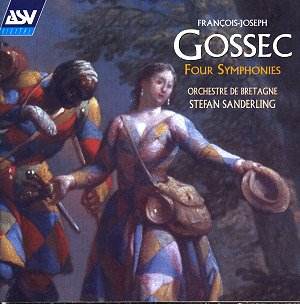France's leading instrumental composer in the latter half of
the eighteenth century Gossec was throughout his long life he lived
to 95 an upholder of Germanic symphonic form. That said, of the many
of his symphonies (fifty or so, some written for wind band and composed
in the main between 1756 and1778) the Italianate fuses effortlessly
with the influential Mannheim school in an idiom it would be hard, if
not impossible, to describe as discernibly French.
Ates Orga's notes are exceptionally informative mixing
lively biographical flair with musical analysis. His delineation of
Gossec's orchestral style is a bravura masterpiece that serves, ironically,
to expose the music to analysis it is not entirely equipped to withstand.
The works have, in any case, a divertimento-like scale. The Symphony
in C; Brook 85 opens with a grand rhetorical movement, not sustained
in the remaining two; attractive though they are in themselves they
lack the kind of distinction necessary to lift the music beyond the
level of the merely decorative or diverting. The flowing Italianate
melody over thrummed pizzicato for example in the Larghetto Siciliana
of the Symphony No 1 in B flat, or the gallant-style brio of the Allegro
of the Symphony in C; Brook 87 are such moments where Gossec's lyrical
impulse is allied to expressive devices conducive to symphonic cohesion.
Especially imaginative is his thinning to single voices in the Minuetto
and Trio of the same symphony and the Mannheim crescendos and drones
of that works Presto finale this is by some way the most effective and
clever of the symphonies on this disc and one quite worthy to stand
beside J C Bach.
Matthias Bamert and the London Mozart Players have
recorded some Gossec on Chandos CHAN9661 with no overlap but Sanderling
and the small but expressive Orchestre de Bretagne are more than merely
affectionate proselytisers in their own right. Recommended particularly
for that Symphony in C.
Jonathan Woolf


